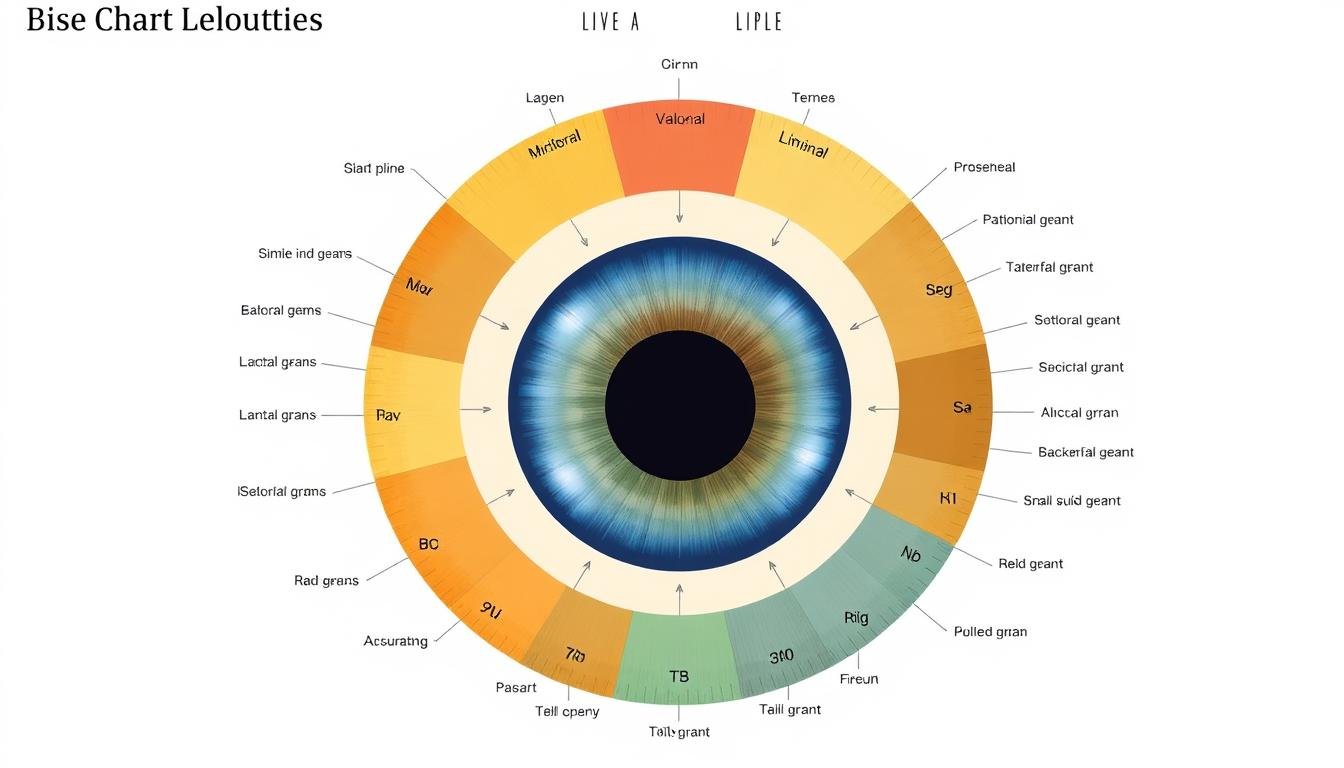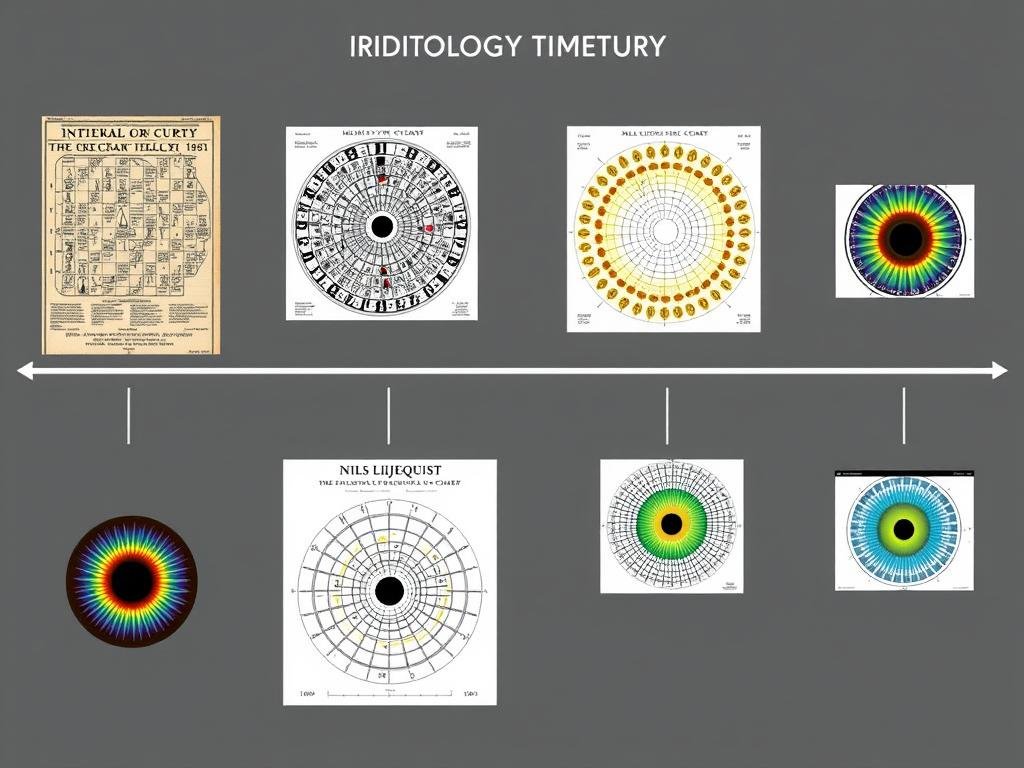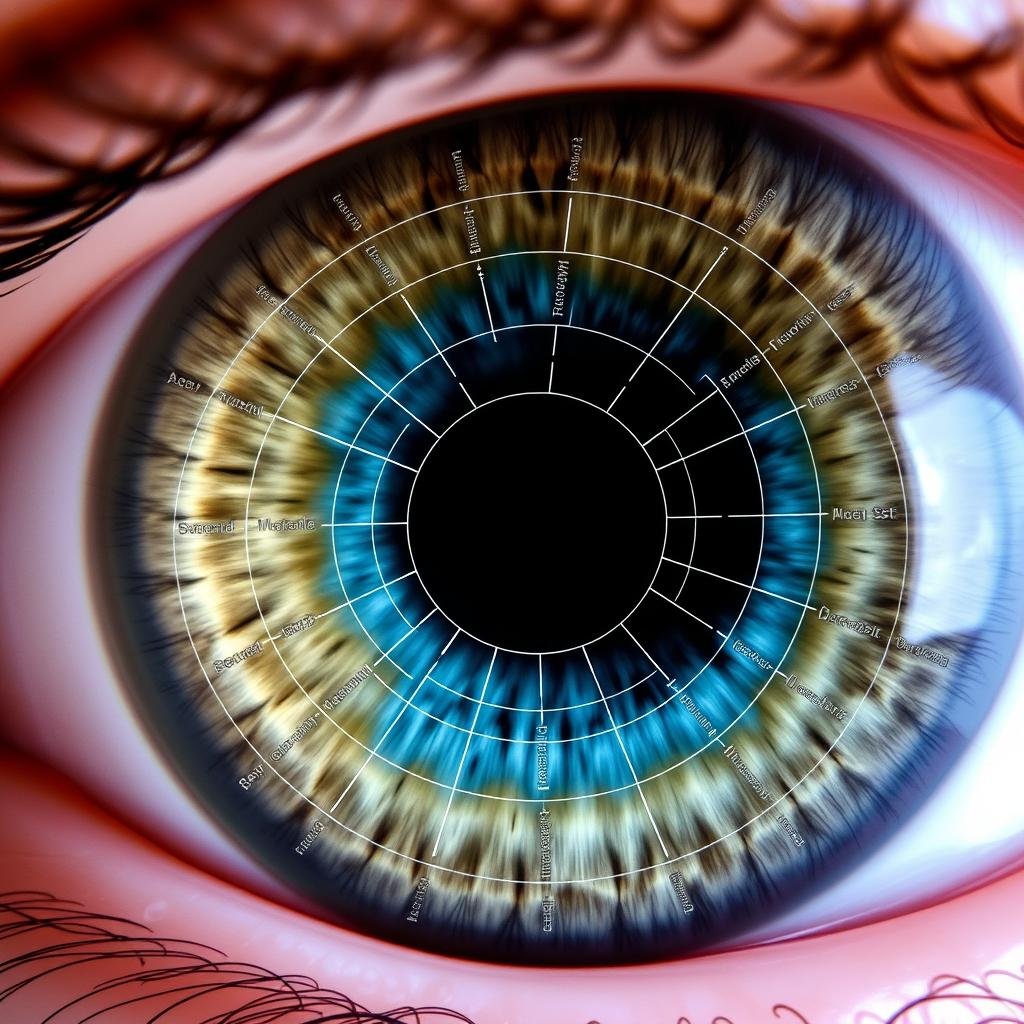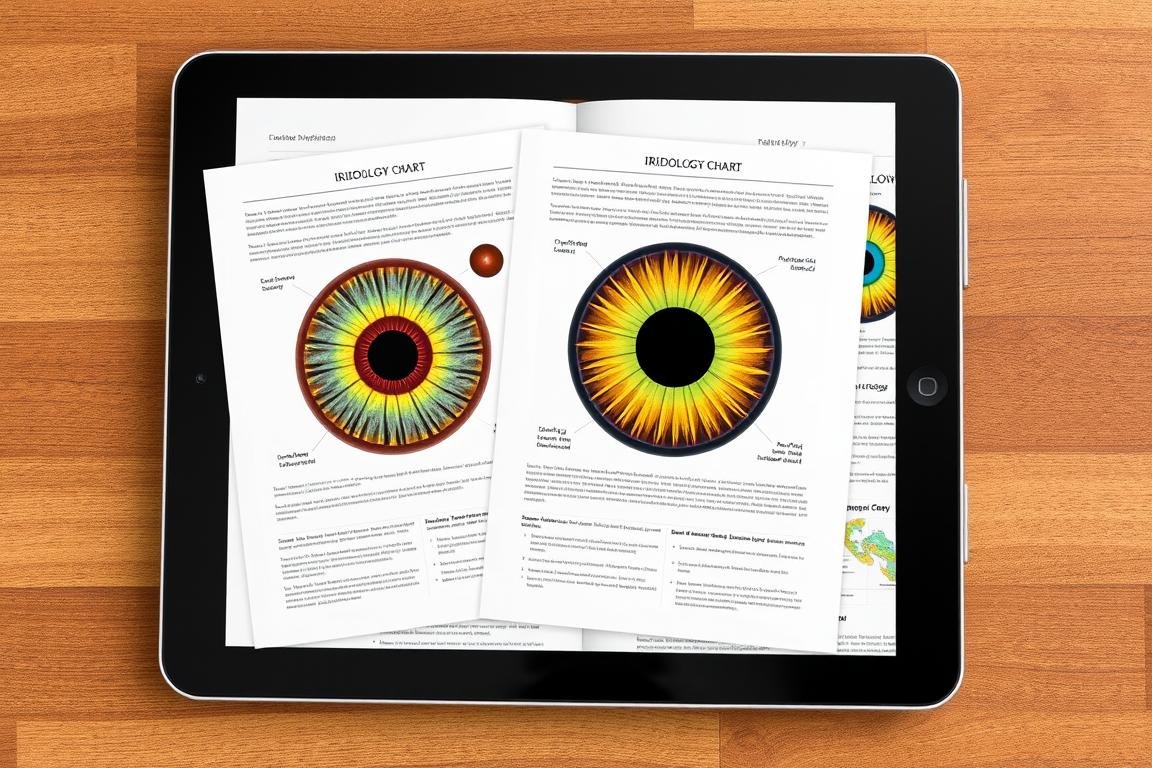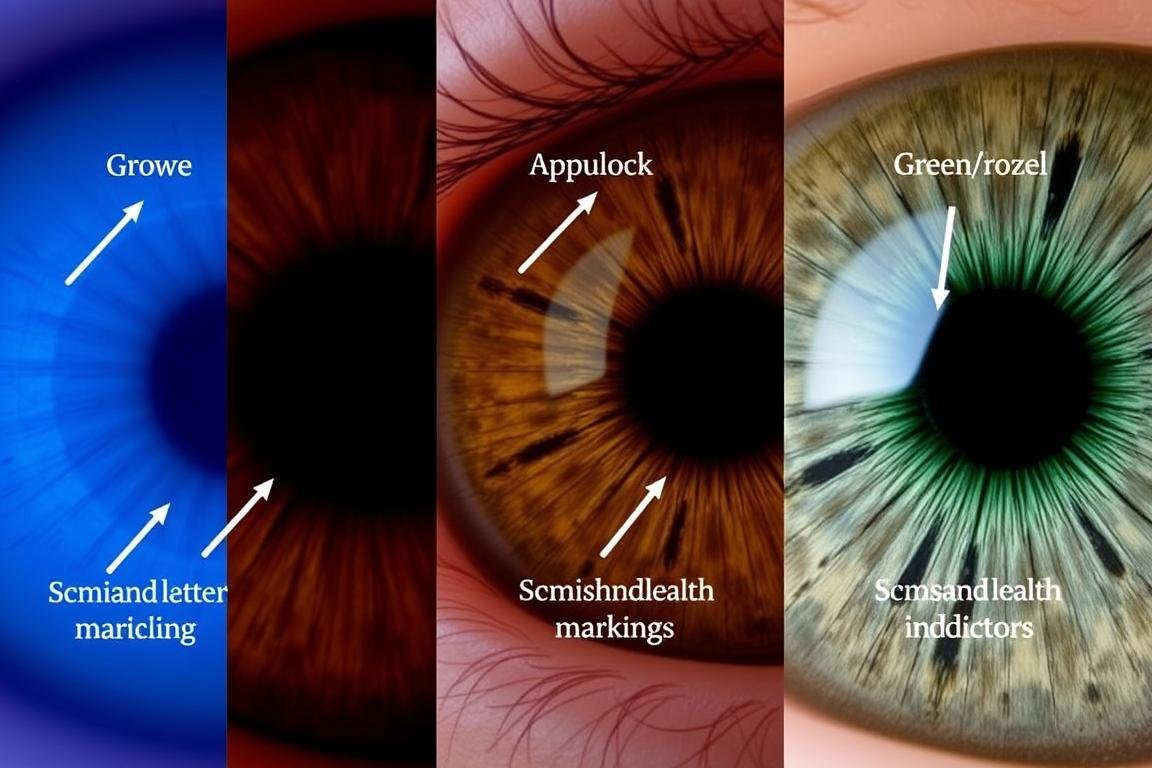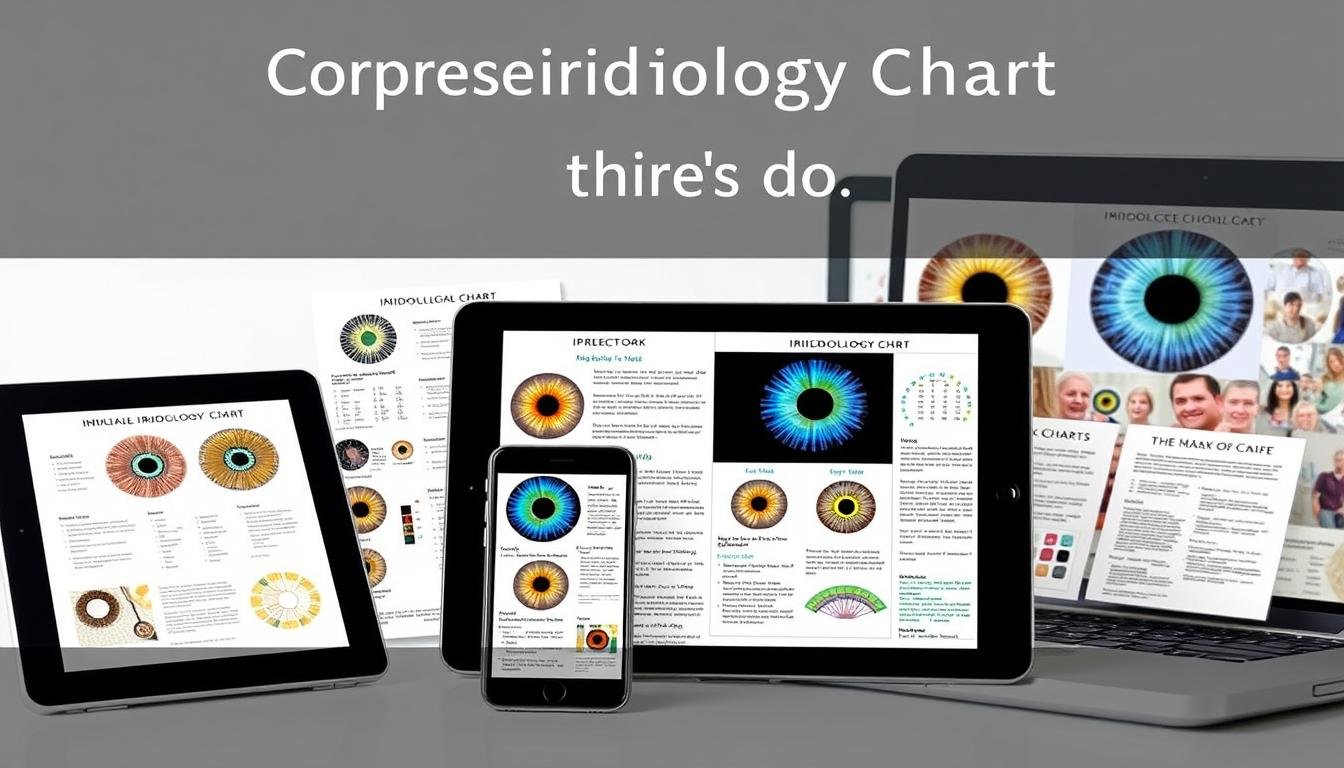Geschichte und Grundlagen von Iridologische Diagramme
Iridologie Hat Wurzeln aus alten Zivilisationen, aber modern Iridologie-Diagramme wurden im 19. Jahrhundert systematisch entwickelt. Der ungarische Arzt Ignatz von von Peczely wird oft die Erstellung des ersten detaillierten Iris -Diagramms im Jahr 1881 zugeschrieben, nachdem Änderungen in der Iris einer Eule nach einer Verletzung beobachtet wurden. Seine Arbeit wurde später von schwedischen Homöopath -Nils Liljequist erweitert, der nach der Einnahme bestimmter Medikamente die Farbänderungen von Iris feststellte.
Heute Iridologie-Diagramme Stellen Sie ein raffiniertes Kartierungssystem dar, das die Iris in Zonen unterteilt, die verschiedenen Organen und Körpersystemen entsprechen. Diese Diagramme dienen als Referenzwerkzeuge, mit denen Praktiker potenzielle gesundheitliche Bedenken durch sorgfältige Untersuchung von Iris -Mustern, -farben und -markierungen identifizieren.
Schlüsselzonen in einem Iridologie-Diagramm
Der Iridologie-Diagramm Unterteilt die Iris in konzentrische Zonen und radiale Abschnitte, die jeweils verschiedenen Körperteilen entsprechen. Das Verständnis dieser Zonen ist für die richtige Interpretation von wesentlicher Bedeutung:
Richtige Iriszonen
- Obere Region: Gehirn, Kopf und Nebenhöhlen
- Rechte Quadranten: Lungen, Leber und Gallenblase
- Unterer Region: Darm, Anhang und rechtes Bein
- Innerer Ring: Magen- und Verdauungsorgane
- Außenring: Haut, Zirkulation und Lymphsystem
Verließ Iriszonen
- Obere Region: Gehirn, Gehirnzirkulation
- Linke Quadranten: Herz, Milz und Bauchspeicheldrüse
- Untere Region: Dickdarm, Fortpflanzungsorgane und linkes Bein
- Innerer Ring: Magen- und Verdauungsorgane
- Außenring: Haut, Zirkulation und Lymphsystem
Die Pupillarzone (Fläche, die die Pupille umgibt) repräsentiert das Verdauungssystem, während die Ziliarzone (mittlere bis äußere Iris) anderen Organen und Geweben entspricht. Die Iris ist weiter in ungefähr 60 Sektoren unterteilt und erstellt eine detaillierte Karte, die erfahrene Iridologen verwenden, um potenzielle gesundheitliche Ungleichgewichte zu identifizieren.
Wie man eine interpretiert Iridologie-Diagramm
Lernen, eine zu interpretieren Iridologie-Diagramm erfordert das Verständnis der Karte selbst und der verschiedenen Markierungen, die in der Iris erscheinen können. Während eine umfassende Interpretation Schulungen und Praxis erfordert, finden Sie hier die grundlegenden Prinzipien:
Grundlegende Interpretationsschritte
- Identifizieren Sie den Iris -Typ (blau, braun, gemischt usw.)
- Beobachten Sie die allgemeine Irisstruktur und Integrität
- Beachten Sie ungewöhnliche Markierungen, Farben oder Muster
- Suchen Sie diese Markierungen an der Iridologie-Diagramm
- Betrachten Sie die entsprechenden Körpersysteme
- Suchen Sie nach Mustern über mehrere Markierungen hinweg
- Entwickeln Sie eine ganzheitliche Bewertung, anstatt bestimmte Bedingungen zu diagnostizieren
Gemeinsame Markierungen und ihre Bedeutungen
Iridologen analysieren verschiedene IRIS -Merkmale, um potenzielle gesundheitliche Bedenken zu ermitteln. Hier sind einige gemeinsame Markierungen und ihre traditionellen Interpretationen:
| Markierung |
Aussehen |
Traditionelle Interpretation |
| Radiale Linien |
Gerade Linien, die vom Schüler bis zur äußeren Iris ausstrahlen |
Normale Irisstruktur; Tiefere Linien können auf Spannung in entsprechenden Organen hinweisen |
| Lacunae |
Geschlossene dunkle Bereiche, die Seen ähneln |
Mögliche inhärente Schwäche oder Läsionen in entsprechenden Organen |
| Kryptionen |
Kleine, dunkle, runde Öffnungen |
Mögliche Toxinakkumulation oder Organfunktionsstörung |
| Ringe (Nervenringe) |
Kreisförmige Linien, die den Pupille oder Iris umgeben |
Nervöse Spannung, Stress oder Angst; Ein Ring um die Iris kann auf Blutdruckprobleme hinweisen |
| Weiße Markierungen |
Helle weiße Flecken oder Wolken |
Entzündung oder akute Aktivität in entsprechenden Organen |
| Braune Flecken |
Dunkle Pigmentierungsbereiche |
Mögliche Leberprobleme oder Toxinakkumulation in der Leberzone |

Denken Sie daran, dass die Iridologie eher als komplementäres Bewertungsinstrument als als diagnostische Methode angesehen wird. Während viele Praktiker in diesen Interpretationen einen Wert finden, sollten sie neben anderen Gesundheitsinformationen und professionellen medizinischen Beratungen berücksichtigt werden.
Herunterladen Iridologie-Diagramm PDF -Ressourcen
Zugang zu Qualität Iridologie-Diagramm Ressourcen sind sowohl für Anfänger als auch für erfahrene Praktiker von wesentlicher Bedeutung. Unsere herunterladbaren PDF -Führer bieten umfassende Referenzmaterialien, um Ihre Lernreise zu unterstützen.
Frei Iridologie-Diagramm PDF -Leitfaden
Unser umfassender Leitfaden für Anfänger umfasst detaillierte Iris -Karten, Interpretationsrichtlinien und Übungsübungen, die Ihnen helfen, die Grundlagen der iridologischen Bewertung zu beherrschen.
Laden Sie kostenloses Iridologie -Diagramm PDF herunter
Kostenlos gegen Premium Iridologie-Diagramm Führer
Wir bieten sowohl kostenlose als auch Premium -Ressourcen an, um unterschiedlichen Lernbedürfnissen und Interessensniveaus für Iridologie gerecht zu werden:
| Besonderheit |
Kostenloser PDF -Leitfaden |
Premium PDF -Kollektion |
| Basis -Iris -Karte |
✓ |
✓ (erweitert) |
| Organ Korrespondenzen |
✓ |
✓ (detailliert) |
| Markieren von Interpretationen |
Basic |
Umfassend |
| Fallstudien |
1 |
12+ |
| Übungsübungen |
✓ |
✓ (Fortgeschritten) |
| Farbcodierungssystem |
Basic |
Fortschrittlich |
| Druckbare Referenzkarten |
– |
✓ |
Verwendung Iridologische Diagramme in ganzheitlicher Praxis
Der Iridologie-Diagramm dient als wertvolles Werkzeug innerhalb eines breiteren ganzheitlichen Gesundheitsansatzes. So integrieren Praktiker und Gesundheitsbegeisterte diese Ressourcen in ihre Praxis:

Erstbewertung
Praktiker verwenden Iridologie-Diagramme Während der ersten Konsultationen zur Ermittlung potenzieller Besorgnisbereiche und zur Festlegung von Basisbeobachtungen. Dies hilft, ein umfassendes Gesundheitsprofil zu schaffen, das weitere Untersuchungen leitet.
Fortschrittsüberwachung
Durch die Dokumentation von IRIS -Veränderungen im Laufe der Zeit können Praktiker verfolgen, wie sich die Änderungen des Lebensstils, die Ernährungsänderungen und andere Interventionen auf allgemeine Gesundheitsmuster auswirken können, die sich in den Iris widerspiegeln.
Kundenerziehung
Die visuelle Natur von Iridologie-Diagramme macht sie hervorragende Bildungsinstrumente. Praktiker nutzen sie, um Kunden zu helfen, potenzielle gesundheitliche Ungleichgewichte und die miteinander verbundene Natur von Körpersystemen zu verstehen.
“Der Iridologie-Diagramm dient nicht als diagnostisches Tool, sondern als Karte, die uns hilft, Bereiche zu identifizieren, die von der unterstützenden Pflege profitieren können. Es ist ein Teil eines umfassenden Ansatzes zum Verständnis der Muster und Tendenzen des Körpers.”
– Dr. Bernard Jensen, Pioniere -Iridologe
Während die Iridologie von der konventionellen Medizin nicht als diagnostisches Instrument anerkannt wird, finden viele ganzheitliche Praktiker einen Wert bei der Verwendung Iridologie-Diagramme als Teil eines umfassenden Bewertungsansatzes, der mehrere Faktoren berücksichtigt, die sich auf die Gesundheit und das Wohlbefinden auswirken.
Schlussfolgerung: Der Wert von Iridologie-Diagramm Ressourcen
Die Untersuchung von Iris -Mustern durch Iridologie-Diagramme Bietet eine faszinierende Perspektive auf die ganzheitliche Gesundheitsbewertung. Diese Tools sind zwar kein Ersatz für die konventionelle medizinische Diagnose, und bieten eine einzigartige Linse, durch die die miteinander verbundenen Systeme und möglichen Ungleichgewichte des Körpers berücksichtigt werden können.
Unsere herunterladbaren PDF -Ressourcen zielen darauf ab, diese alte Praxis für modernen Lernenden zugänglicher zu machen und strukturierte Anleitungen für diejenigen zu bieten, die die potenziellen Erkenntnisse, die die IRIS -Analyse bieten können, anwesend sein. Unabhängig davon, ob Sie ein ganzheitlicher Ärztin sind, der Ihre Bewertungsinstrumente erweitern möchte oder einfach nur neugierig darauf ist, was Ihre Augen über Ihre Gesundheit zeigen, bilden unsere umfassenden Führer eine solide Grundlage für Ihre Erkundung.
Beginnen Sie noch heute Ihre Reise in die Iridologie, indem Sie unsere kostenlose herunterladen Iridologie-Diagramm PDF und Entdeckung der faszinierenden Welt der Iris -Interpretation.















